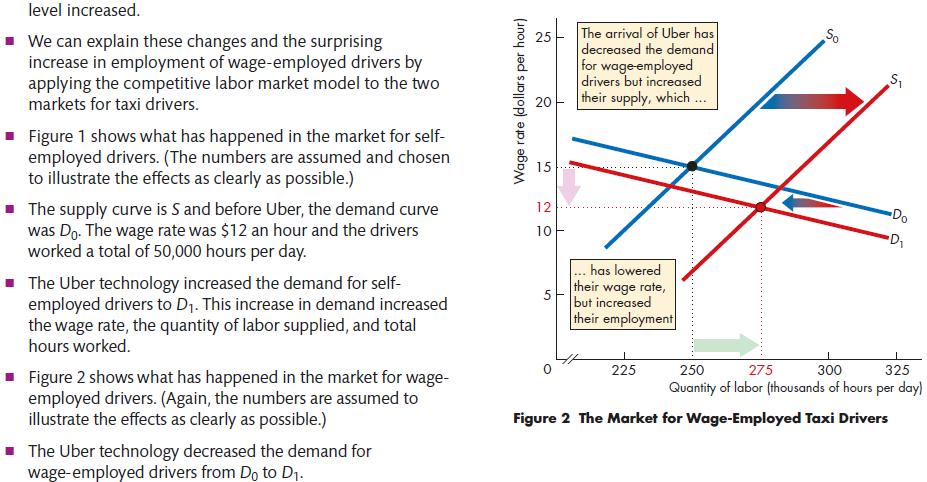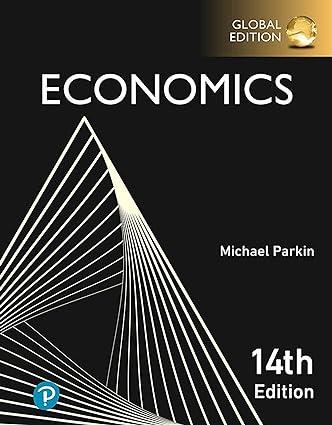Question:
After you have studied Economics in the News on pp. 478–479, answer the following questions.
a. How is the demand for self-employed Uber drivers determined?
b. How is the demand for regular wageemployed taxi drivers determined?
c. Which of the influences on the demand for self-employed drivers changed when Uber arrived to increase demand?
d. Which of the influences on the demand for wage-employed drivers changed when Uber arrived to decrease demand?
e. Explain the two possible reasons why a decrease in the demand for wage-employed drivers can result in an increase in their level of employment.
f. Illustrate with a graph the backward-bending supply curve explanation for the fall in the wage rate and increase in employment of wage-employed drivers.


Transcribed Image Text:
Uber is a matching platform for connecting self-employed drivers and passengers. The Uber technology has created an incentive for people to become self-employed Uber drivers and for passengers to use the services of these drivers. Traditional wage-employed taxi drivers-full-time, wage- earning taxi drivers-have demonstrated against Uber and tried to block its entry into their markets, fearing that it would take their jobs or lower their incomes. How has Uber changed the labor markets for self-em- ployed and wage-employed taxi drivers? This question has been answered by three economists at the University of Oxford Martin School, whose work is reported in the news article. Their answer: The number of self-employed drivers increased by at least 50 percent and their wage rate increased by 10 percent; and the wage rate of wage- employed drivers fell by 10 percent, but their employment Wage rate (dollars per hour) 8 235 15 12 10 5 50 Uber technology has increased the demand for self- employed drivers ... S ... and increased their employment and wage rate Do "D 100 125 75 Quantity of labor (thousands of hours per day) Figure 1 The Market for Self-Employed Taxi Drivers








